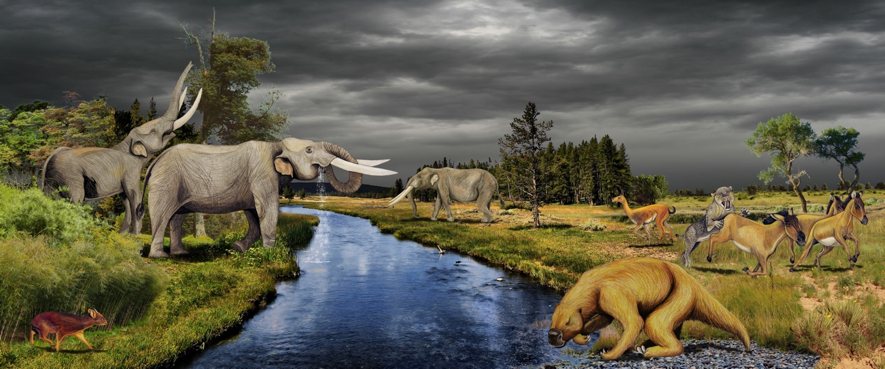The gomphotheres are a family of extinct elephants related to the mammoths that inhabited Eurasia and the American continent. They reached South America during the Great American Interchange when the Isthmus of Panama connected the two continents. The extinction of gomphotheres in South America is relatively recent and linked to the phenomenon of disappearance of the megafauna during the late Pleistocene, approximately between 12,000 and 10,000 years ago. Their paleontological interest lies in the fact that gomphotheres, as other megafauna, have played an important role as ecosystems engineers in shaping past vegetal landscapes, considering that they became very numerous and with a high demand for biomass. For these reasons, they are considered key actors in the investigation of the extinction of the megafauna.
The paleodiet of the gomphotheres from Central Chile was studied using a multi-proxy approach, including dental microwear, stable isotopes and the microfossils from the dental calculus preserved in the teeth. Each of these proxies are providing access into different windows in the life history of the gomphotheres. In other words, the diet and the environment could be determined from the first months or years of life until the last days before the animal died.
The results of this study show that gomphotheres from Central Chile had a diet dominated by the consumption of leaves from trees or bushes, and to a lesser but complementary extent, of herbaceous plants. This multiproxy study widens potential occupied habitats to closed-canopy forests. This habitat variability supports the hypothesis that the diet of gomphotheres appears to be more constrained by resource availability than by the potential dietary range. This availability of resources changed throughout the Pleistocene depending on glacial and interglacial periods.
The study highlights the importance of Central Chile as one of the most significant areas in South America for the research on large mammalian refuges during glacial periods and for the study of the extinction process of its megafauna during the last Ice Age.
Reference
